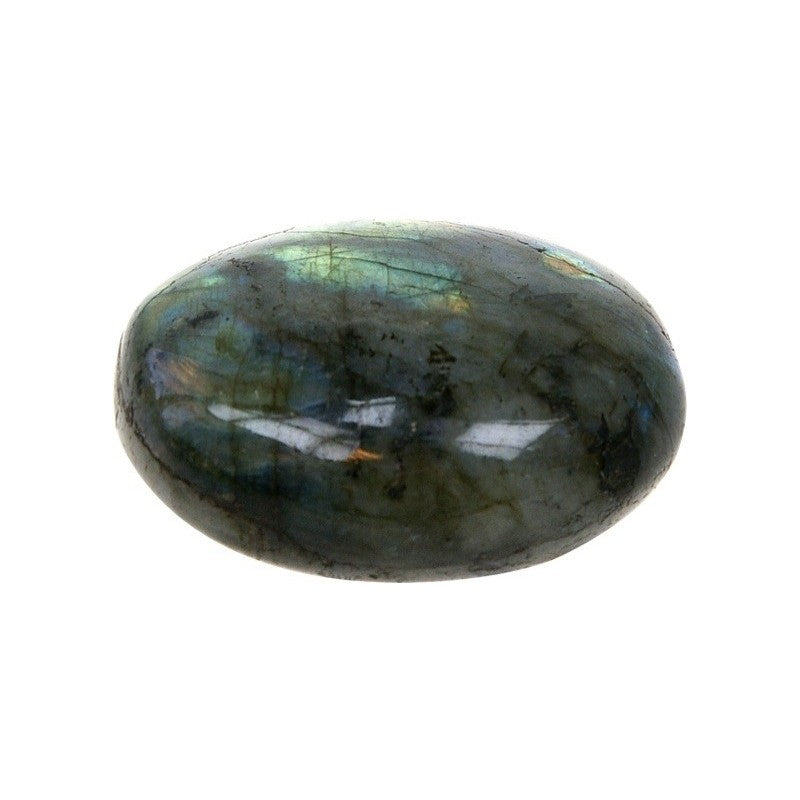Labradorite

Labradorite
Some labradorite specimens exhibit a schiller effect, i.e. a strong play of iridescent blue, green, red, orange and yellow colors, as shown in the photos. Labradorite is so well known for these spectacular menifestations of color that the phenomenon is known as "labradorescence". Specimens with the best quality of labradorescence are often selected for use as precious stones. Labradorite has become a popular gemstone due to the unique iridescent color scheme that meny specimens exhibit. The quality, hue and shine of the labradorescence vary from one specimen to another and within the same specimen. The exceptionally colored stones are often called "spectrolite".
Labradorite is rarely seen in jewelry from mass retailers. It is rather used by designers and jewelers who carry out unique and personalized work.
meny labradorite specimens do not show labradorescence. These materials can still produce beautiful gemstones due to their desirable color or other optical effects such as adventurescence.
Labradorite is rarely seen in jewelry from mass retailers. It is rather used by designers and jewelers who carry out unique and personalized work.
meny labradorite specimens do not show labradorescence. These materials can still produce beautiful gemstones due to their desirable color or other optical effects such as adventurescence.
Labradorite owes its name to its place of discovery on the Isle of Paul, near Nain, in Labrador (Canada). It was discovered there in 1770 by a Moravian missionary.
A significant amount of gray to black labradorite with good labradorescence is produced from sites in Madagascar and Russia. Small quantities of transparent labradorite with internal color flash are produced in India.

A significant amount of gray to black labradorite with good labradorescence is produced from sites in Madagascar and Russia. Small quantities of transparent labradorite with internal color flash are produced in India.
Learn more about labradorite: Wikipedia


